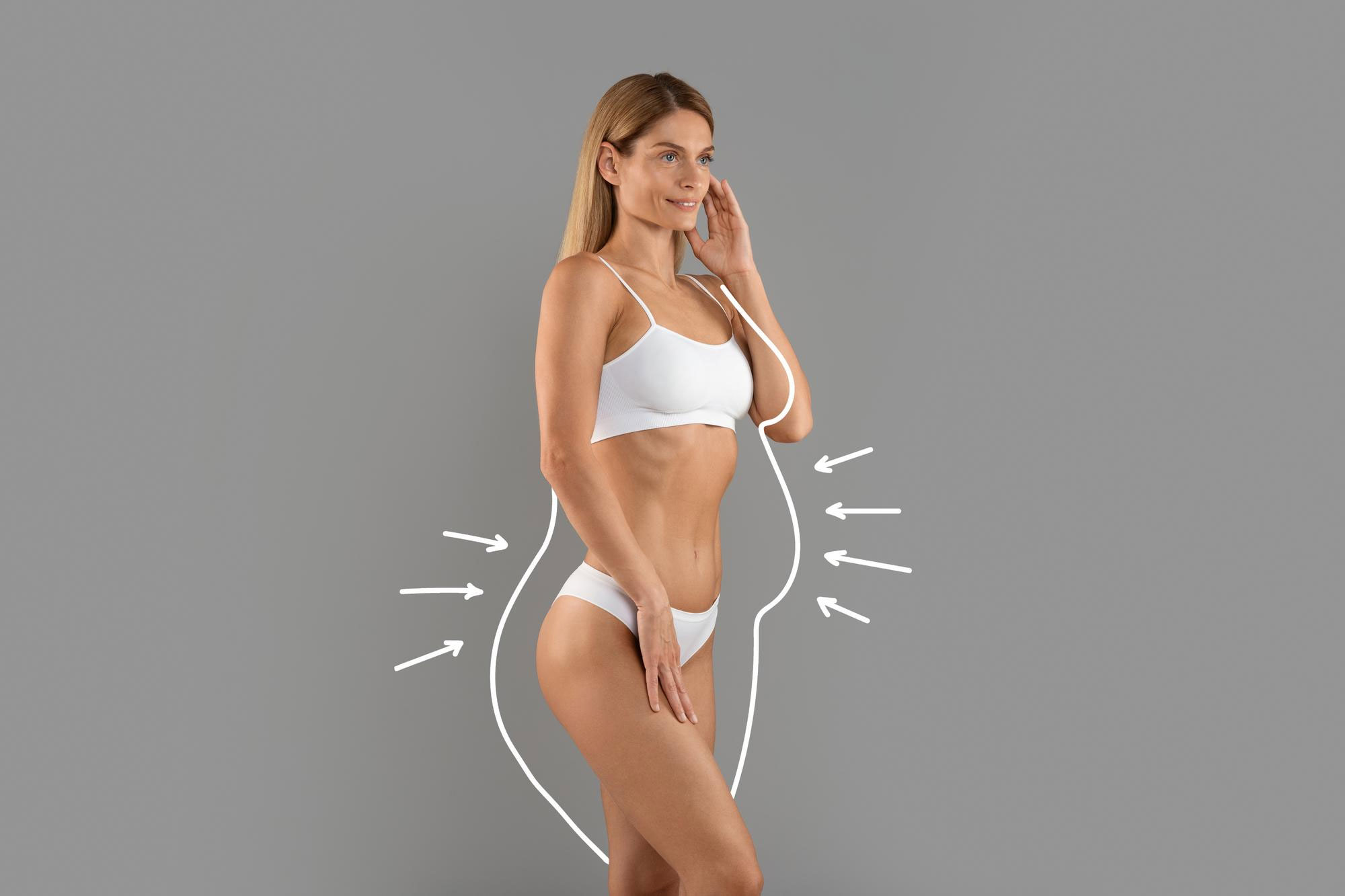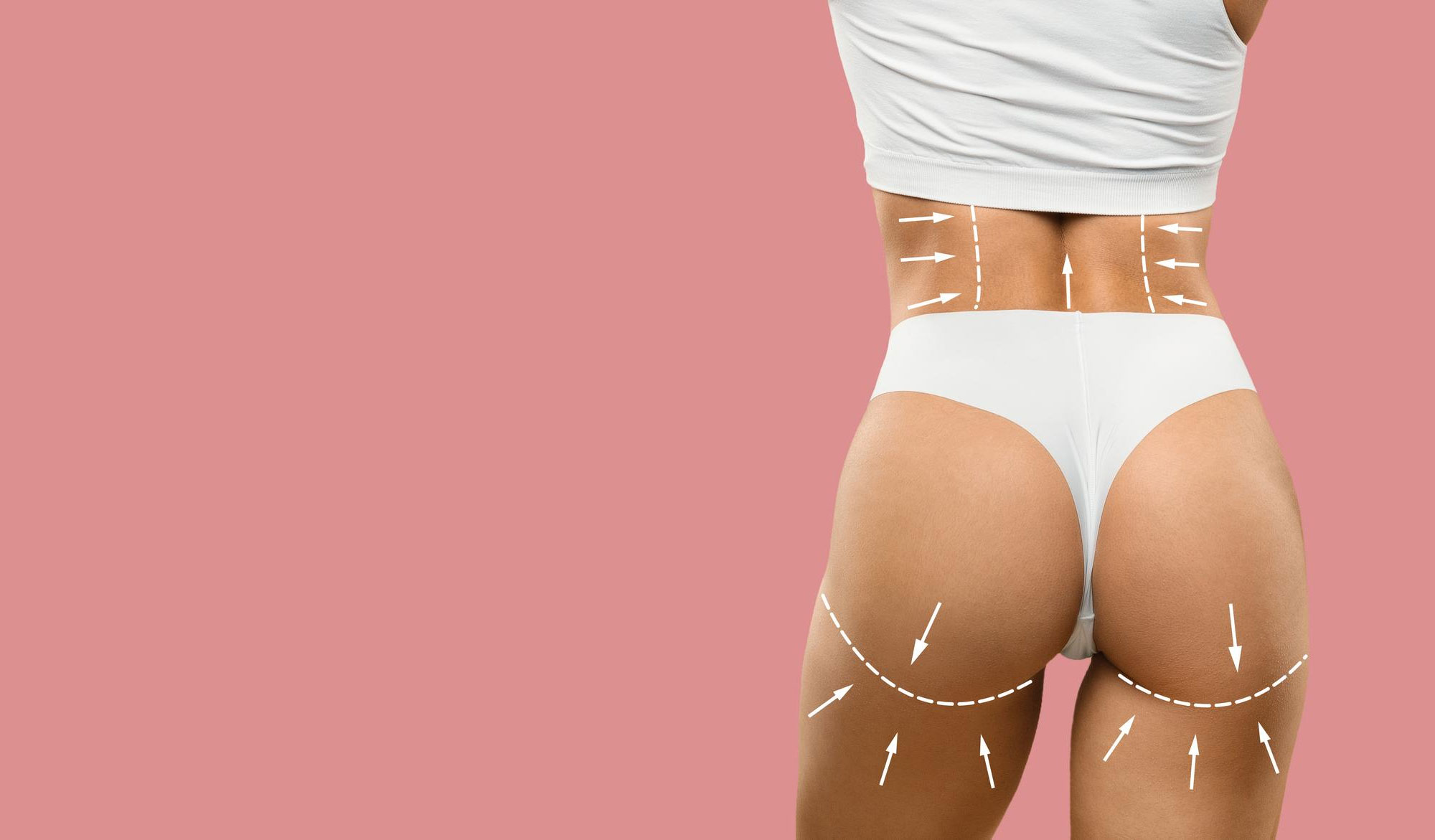What Exactly Is "Breast Augmentation"?
Breast augmentation, simply put, is a surgical procedure that aims to achieve the desired size, shape or fullness of the breasts by adding volume to the breast tissue. The main goal here is to achieve a result that is "proportionate to the rest of the body and natural looking".
Implant Use: Most of the time, breast volume is increased by using implants filled with silicone or saline (salt water). These implants are placed under the breast or in the upper/lower part of the pectoral muscle.
Fat Transfer: In some cases, fat tissue taken from the person's own body is injected into the breast. In this method, no external implant is used; however, it may not be sufficient alone in cases where a large amount of augmentation is required.
You can think of this procedure as a home renovation: When you want to make a room in your home larger and more spacious, you are guided by how much you want to add, the overall plan of the room and how it fits in with the rest of the house.
Why Consider Breast Augmentation?
Some people may naturally have small breast tissue; others experience a decrease in breast volume over time due to weight loss, breastfeeding or aging. In such cases, the person may not feel as happy as before when looking in the mirror. While this unhappiness may sometimes be due to aesthetic expectations, sometimes it may reflect a deeper emotional state that affects the person's self-confidence.
Body Proportioning: This disproportion can be especially noticeable in people whose body-mass index is compatible but whose breast volume is not proportional to the width of the hips or shoulders. Breast augmentation makes the silhouette more balanced.
Feeling Good About Yourself: Postpartum sagging or reduced volume of breasts may cause some women to think "I can't take care of myself as well as I used to". In such cases, plastic surgery can help increase self-confidence.
Congenital or Medical Conditions: This procedure is also preferred for congenital breast development disorders, chest wall deformities or reconstruction after mastectomy (complete removal of the breast).
The main issue here is to improve your quality of life and feel better about yourself. However, it is important to have realistic expectations. Wearing a high-heeled shoe can also lengthen you a few centimeters, but in the end, just as you should pay attention to your foot health, "long-term comfort" and "natural result" should be prioritized in breast augmentation.
What kind of preparation should be done before the surgery?
The first meetings with your surgeon are as important as the surgery. Because in this process, both your health status will be evaluated and the question "What kind of result do I want?" will be answered.
Physical Assessment
Your breast structure, skin quality, the amount of breast tissue present and the shape of your rib cage will be examined. You will also be asked about your medical history, regular medications, allergies or previous surgeries, if any.
Visual Planning
Some centers use 3D imaging technologies. Thus, possible postoperative appearances can be shown to you in a computer environment. You can think of it as seeing the design of the room on the computer when buying a new piece of furniture.
Implant Selection
Options about the size, shape, surface (smooth or rough) and the layer in which the implant will be placed are discussed. Personal preferences as well as the anatomical features of your body will be decisive here.
Tests and Controls
Blood tests, sometimes cardiac evaluations such as ECG or imaging methods such as mammography/ultrasound may be ordered before surgery. These tests are done to avoid unwanted surprises during or after surgery.
Lifestyle Adjustments
If you smoke, it is recommended that you quit at least a few weeks before surgery. Because smoking has a negative effect on wound healing. Since the risk of bleeding may increase, you may need to adjust your blood thinners according to your doctor's advice.
What Happens During Surgery?
Breast augmentation surgery is usually performed under general anesthesia, but in some cases, local anesthesia with sedation may be preferred. The average procedure time varies between 1 and 2 hours.
Opening the Incision
The surgeon makes an incision at the planned incision site (for example in the inframammary fold, around the areola or in the armpit). Through this incision, the pocket where the implant will be placed is prepared.
Implant Placement
The implant is positioned under the breast tissue or under/over the pectoral muscle.
Submuscular: The implant is placed under the pectoral muscle. It can be preferred especially for people who want a more closed upper part, a natural appearance and thin tissue.
Subglandular The implant is placed between the mammary gland and muscle. It offers a shorter healing time in some patients, but if the tissue is thin, the implant contour may be more prominent.
Subfascial It is the method of placement under fascia tissue. It may provide similar advantages to under muscle; it is chosen according to the surgeon's preference and the patient's anatomical structure.
Incision Closure
After the implant is placed, the incision is closed with sutures. Tapes or special adhesives can also be used to support the wound edges afterwards.
Patient Awakening and First Checks
After you wake up from anesthesia, you may feel slight pain, pressure and tightness in the chest area. This is quite normal. The surgeon will perform an initial examination to check for any signs of bleeding or complications.
You can imagine the surgery itself as a kitchen renovation: The old countertop is removed, the new countertop is measured, all the connections are made and finally carefully installed. When done professionally and carefully enough, the result will be quite satisfying.
Which Implant Options Are There for Breast Augmentation?
One of the first things that comes to mind when it comes to breast augmentation is the question "Which implant do I prefer?". Implants differ in many ways, but can basically be summarized under three headings:
According to Filling Material
Saline (Salt Water) Implants: A silicone sheath is filled with sterile saline. The advantage is that if the implant is damaged, the salt water is harmlessly absorbed. However, they may feel a little firmer to the touch than silicone implants and may show folds or rippling, especially in people with thin skin.
Silicone Gel Implants: They contain cohesive (non-fluid, more adhesive) silicone gel. Its biggest advantage is that it feels like a natural texture. If there is a tear or leak, it can sometimes be asymptomatic, so regular check-ups are recommended.
According to Shape
Round Implants: Provides a fuller appearance, especially in the upper part of the chest. There is no rotation problem; even if the implant rotates, its shape does not change.
Anatomical (Drop or "Teardrop") Implants: The lower part of the breast is wider, narrows towards the upper part and offers a natural slope. However, if the implant rotates, deformity may occur. For this reason, it is mostly used with textured surfaces.
According to Surface Characteristics
Smooth Implants: They have a softer surface. In order to reduce capsule formation, plans are usually made in accordance with the patient's tissue structure.
Textured Implants: Stays fixed by adhering to the tissue; may reduce the risk of capsular hardening to some extent. However, in recent years there has been controversy that some rough implants may be associated with a rare type of lymphoma (BIA-ALCL).
New generation implants are also available with a high cohesive gel known as "gummy bear". This gel has the consistency of a gummy bear; even if it is cut, the gel does not disintegrate and maintains its form. Thus, even in case of rupture, silicone does not spread inside the body.
What is the Postoperative Recovery Process?
After the surgical procedure is completed, the recovery period comes. Spending the healing process patiently and in line with your doctor's recommendations is critical for you to get good results in the long term.
First Days Swelling, tenderness and pain around the breast are considered natural. It can be controlled with painkillers. You may be asked to wear dressings or a special bra (similar to a sports bra) at the surgical site. These bras support the breast shape and speed up healing.
First Week It usually takes a week to return to work. Light walks are recommended, but you should avoid heavy sports and movements that require intensive use of the arms. In other words, strong exercises that will work your arm muscles may be inconvenient during this period.
First month: It takes some time for the implant to fully settle and for the capsule tissue to take shape. Your breasts may be higher or firmer than you expected in the first few weeks. This is usually normal; as the body tissues heal, they soften and the implant descends to a more natural position.
After 3-6 Months: Mostly during this time, we can say that your breast is close to its final form. However, the final results can sometimes take up to 6 months or even 1 year. It is important that you do not neglect the controls recommended by your surgeon.
You can liken the healing process to a newly planted plant taking root. Just as a newly planted flower needs time to take root, the implant adapts to your body in a similar way. It is necessary to follow the process patiently.
How Does This Process Affect Psychology and Sexual Life?
Many people think that breast augmentation is only a physical change; however, the psychological dimension of this operation is also very important.
Self Confidence: Having a more proportional and fuller breast shape after surgery increases the self-confidence of many people. The happiness experienced, especially when choosing clothes or wearing a bikini, can have a positive impact on social life.
Body Perception: Although breast augmentation may make a person happy in front of the mirror, it should be remembered that the main source of happiness is internal factors. Even if breast size changes, one may also need to work on one's sense of self-worth and life expectations.
Sexual Satisfaction: Some studies show that an increase in self-confidence leads to an increase in sexual desire and satisfaction. The more attractive you feel, the more comfortable you can be in communicating and intimacy with your partner.
You can think of this as having a favorite decoration at home. You may feel more peaceful and happy in your home when the decoration is renewed. However, painting the walls and changing the furniture does not solve all the problems in your life; your psychological well-being is at the core.
What are the Possible Risks and Complications of Breast Augmentation?
As with any surgical procedure, there are certain risks associated with breast augmentation. However, some of these risks are "rare" and some are "manageable". Nevertheless, it is very important that all patients make an informed decision.
Hematoma and Seroma
These are swellings caused by the accumulation of blood or body fluids after the operation. While small infections may resolve spontaneously, in some cases intervention may be necessary.
Infection
An infection at the surgical site may sometimes even require removal of the implant. This risk is tried to be minimized with antibiotic treatment and sterile applications.
Capsule Contracture
The hard tissue that the body forms around the implant can sometimes become overly tight, causing breast stiffness, pain or deformity. Treatment may involve surgical opening of the capsule or replacement of the implant.
Implant Rupture or Leakage
If a saline implant ruptures, the saline is absorbed by the body and the implant deflates instantly. When silicone gel implants rupture, they can sometimes be asymptomatic. Regular follow-up is therefore recommended.
BIA-ALCL (Breast Implant Associated Anaplastic Large Cell Lymphoma)
It is rare and is usually associated with implants with a rough surface. It can be completely controlled with early diagnosis and treatment.
Sensitivity Changes
After surgery, changes such as increased or decreased nipple sensation may occur. This condition improves over time in most patients, but there is also the possibility of it becoming permanent.
In short, just as you cannot avoid the risk of an accident 100% when buying a new car, it is not possible to reduce the possibility of complications to zero in these surgeries. The important thing is to work with an experienced surgeon in the field, to follow the pre- and postoperative rules meticulously and not to neglect regular controls.
What are the Latest Trends and Innovations?
Developments in the world of surgery never stop. In the field of breast augmentation, natural results, minimal scars and rapid healing have become more prioritized than ever.
New Implant Technologies: Implants that are more flexible, feel more natural and aim to reduce the risk of capsular contracture are being developed. Brands such as Motiva stand out with their innovative surface technology and ergonomic designs.
Fat Injection (Hybrid Method): By injecting fat together with the implant, it is possible to both complement the volume created by the implant and provide a smoother transition in the décolleté area.
3D/4D Visualization: Patients can now see their pre-operative post-operative image through virtual models that are almost lifelike.
Minimally Invasive Approaches: Endoscopic surgical methods allow implant placement through a small incision under the armpit. Thus, the scar in the breast area can become almost invisible.
Today's trend is to achieve a breast form that is "proportional to body size and has smooth transitions" rather than "remarkable large breasts". This allows many patients to achieve a more natural silhouette after surgery.
What to Consider When Choosing a Surgeon?
One of the most critical steps in the breast augmentation process is choosing the right surgeon. Remember, you can see this surgery as a decision that you will carry for many years.
Expertise and Experience
It is important that you work with someone who specializes in Plastic, Reconstructive and Aesthetic Surgery and is experienced in this field. Experience with a large number of breast augmentation surgeries also increases the physician's ability to deal with unexpected situations.
Good Communication
Make sure that you are comfortable communicating with your surgeon and that you can openly ask all the questions you have in mind. A good patient-physician dialog directly affects your satisfaction with the results of the surgery.
Reliable References
The comments of patients who have had surgery with that surgeon before, before and after photos can give you an idea. Of course, since everyone's body structure is different, the results may not be exactly the same.
Location of the surgery
The hospital or center where the procedure will be performed must have international or national accreditation certificates. A team prepared for emergencies and a fully equipped environment are essential for your safety.
What Should You Pay Attention to After Surgery?
After the breast augmentation surgery is completed, it is useful to follow certain rules to maintain the permanence and beauty of the results obtained.
Rest and Movement
Avoid heavy work and sudden arm movements for the first few days. Give yourself time for your body to heal.
Using a Supportive Bra
Using a special medical bra or sports bra during the period recommended by the surgeon increases your comfort and helps the implant to be positioned correctly.
Follow-up Appointments
Regular check-ups are extremely important for early detection and intervention of possible complications. Keep your appointments on the schedule planned by your surgeon.
Lifestyle
If you smoke, it is recommended that you severely reduce or quit because of the negative effects on wound healing. A balanced diet and avoiding excessive alcohol also speed up the healing process.
Long-term Controls
Especially if you have a silicone gel implant, it is advisable to be checked periodically with imaging methods such as ultrasound or MRI. The aim is to catch conditions such as implant rupture or leakage early.


















